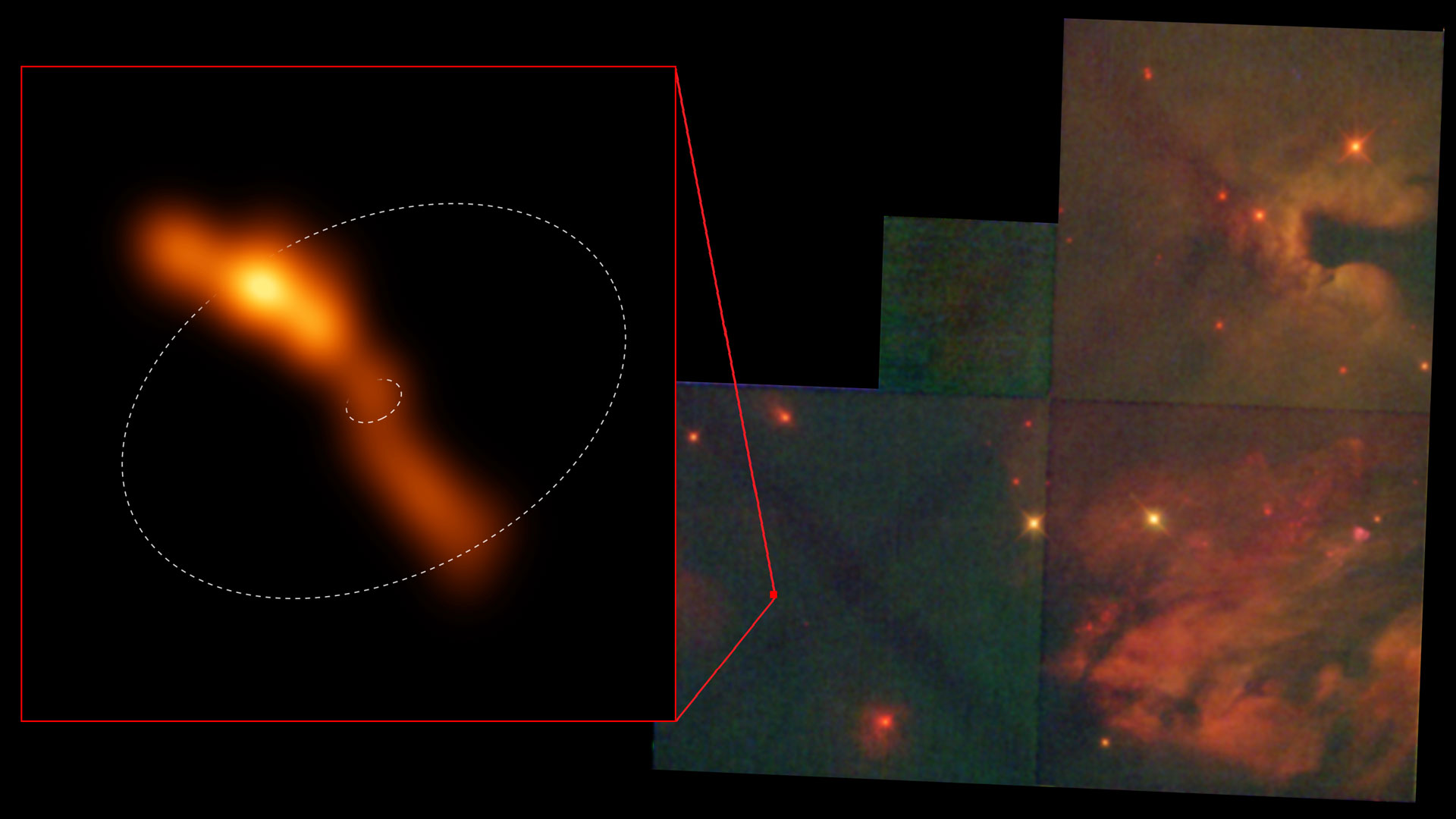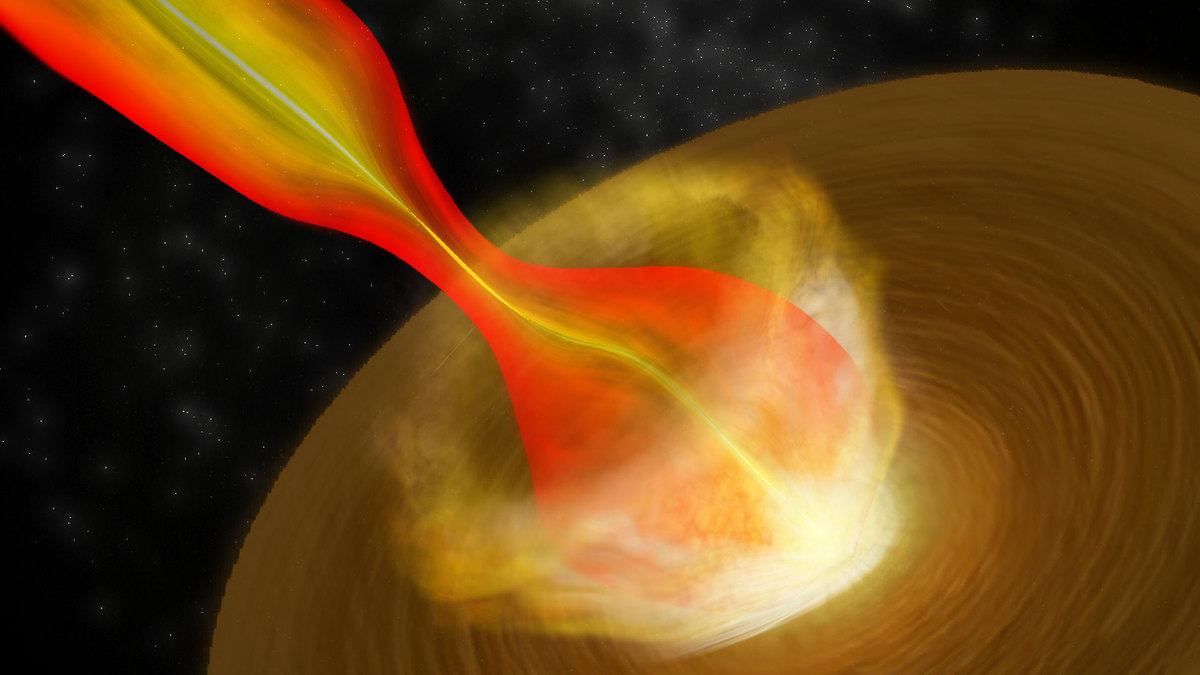
Left: radio image of Cep A HW2 showing jet emission; white ellipses show the poisition of the disk around the protostar. Right: Hubble Space Telescope optical image of the cloud where the Cep A star formation region is; the region where HW2 is located is obscured by dust. Credits: Carrasco-Gonzalez et al. 2021; Bill Saxton, NRAO/AUI/NSF; STScI.
An international team of astronomers studied the jet of material coming from a massive star in the process of formation and found a strong difference between it and jets ejected by low-mass young stars.
“This would point to a major difference in the mechanisms at work in protostars of different masses,” said Dr. Carlos Carrasco-Gonzalez of the Instituto de Radioastronomía y Astrofísica (IRyA), at UNAM Campus Morelia, Mexico, who lead the work.
Young stars, or protostars, grow accreting material from a disk that closely orbits them, propelling part of that material in jets perpendicular to the disk. In low-mass stars, with masses similar to the Sun, these jets become narrow and relatively tight near the star, in a process called collimation.
Because most protostars of higher-mass are further away from Earth, it has been difficult to study the regions close to them, so it wasn’t clear if the same process was occurring. The team of astronomers used the Karl G. Jansky Very Large Array (VLA) in New Mexico, USA, to observe a massive young star called Cep A HW2.
This massive protostar is located about 2300 light years away in the direction of the constellation of Cepheus. It is expected to become a new star of about 10 solar masses. The newly obtained images have the highest angular resolution yet of this kind of object, so the inner region of the jet was observed with finest detail ever.
This region has a size similar to the diameter of the Solar System. “For the first time, we were able to see within 100 astronomical units, which is the zone where we think the jet is collimated”, said Dr. Carrasco-Gonzalez. One astronomical unit measures the average distance between the Earth and the Sun.
"What we saw is very different from what usually is seen in the jets from low-mass stars," said Dr. Adriana Rodriguez-Kamenetzky, postdoctoral researcher at IRyA and part of the research team. In low-mass protostars, observations had shown that the jets collimate close to the star, at only a few astronomical units.
In Cep A HW2, however, "we see not a single jet, but two things -- a wide-angle wind originating close to the star, then a highly-collimated jet some distance away," said Dr. Alberto Sanna, of the Osservatorio Astronomico di Cagliari (INAF) in Italy. The collimated jet starts at a distance from the star comparable to the distance from the Sun to Uranus or Neptune.

Illustration of the region around Cep A HW2: the wind from the star appears wide-angled at first and becomes collimated at a certain distance from the star. Credits: Bill Saxton, NRAO/AUI/NSF
There are two possibilities to explain this discovery, according to the researchers: the first is that the same mechanism could be working in protostars of both high and low mass, with the collimation distance determined by the mass, so the jet becomes narrow further from the star in high-mass young stars.
The second possibility is that high-mass young stars are not able to produce the collimated jet themselves, but only eject the wide-angle wind observed in Cep A HW2, and collimation only occurs when the physical conditions around the protostar restrict the flow of material, narrowing the jet.
Whether the star formation processes of high and low-mass stars are similar or significantly different is still debated, so discerning between both possibilities may help resolve these questions about star formation models. “Answering this question is important to understanding how stars of all masses form,” concluded Dr. Carrasco-Gonzalez.
Text: IRyA UNAM, based on text by NRAO.
NRAO press release: https://public.nrao.edu/news/jets-massive-protostars-different
Dr. Carlos Carrasco González Carreer
Dr. Carlos Carrasco-González obtained his bachelor’s degree in physics from the University of La Laguna, Spain, and his PhD in astrophysics from the University of Granada and the Instituto de Astrofísica de Andalucía (IAA-CSIC) in 2010. He has been a researcher at the National Autonomous University of Mexico (UNAM) since 2013.
He uses radio-interferometric observations to study astrophysical jets and protoplanetary disks. In particular, he studies the magnetic field and collimation mechanisms in protostellar jets using the radio-interferometers ALMA (Atacama Large Millimeter Array) and VLA (Very Large Array). He also studies the evolution of dust and planet formation in protoplanetary disks.
Dr. Carrasco-González has been head of postgraduate studies in astrophysics at the Institute of Radioastronomy and Astrophysics, and also organizes a summer research program in the IRyA for undergraduate students from Mexico and other Latin American countries.
Scientific paper
This research article will be published on June 7, 2021 in The Astrophysical Journal Letters. Other than Dr. Carlos Carrasco González and Dra. Adriana Rodríguez Kamenetzky, Dr. Roberto Galván Madrid from IRyA was also part of the team.
Zooming into the Collimation Zone in a Massive Protostellar Jet
http://arxiv.org/abs/2106.01235
Media contact:
Dr. René A. Ortega Minakata
Outreach and Science Communication
IRyA UNAM Campus Morelia




